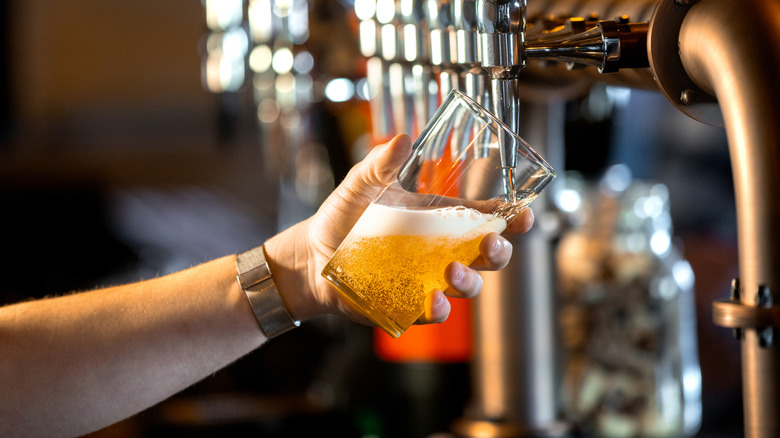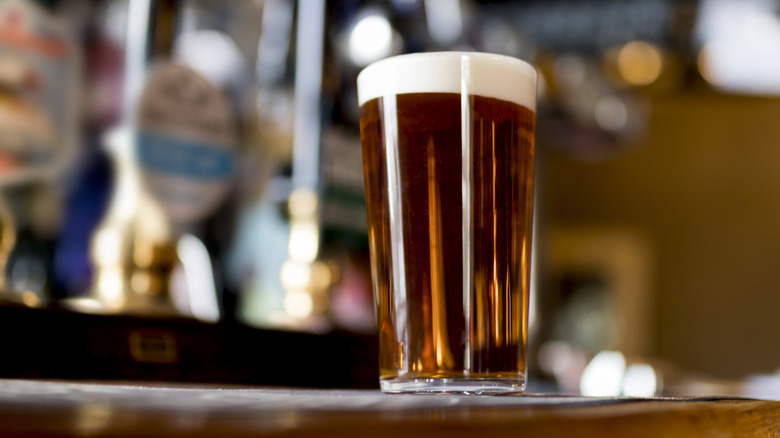Keg Vs Cask Beer: What's The Actual Difference?
Beer drinkers have many choices to make when they walk into pubs, bars, or self-service taprooms (which might be here to stay). One of the key ones is whether they want to enjoy beer that's been stored in a keg or a cask. This is a huge choice because there are many differences between them.
For starters, the beer that goes into casks is unfiltered and unpasteurized. This means that live yeast remains in the liquid, causing it to undergo a secondary fermentation in the cask itself. This natural form of carbonation gives cask beer a gentle, sometimes imperceptible, fizziness and a lovely, smooth texture. In contrast, the beer that goes into kegs is filtered. (If kegs are being exported the beer is sometimes pasteurized, too.) Filtering removes the yeast and any sediment from the beer, giving it a longer shelf life and making it clearer. Beer that's stored in kegs is also force carbonated — a process wherein carbon dioxide is manually infused into the beer to carbonate it. This is a quick process that gives the brewer complete control over the carbonation level of the beer. Different carbonation methods influence the taste and texture of beer, and although it does not have to always be the case, keg beer is often fizzier and blander than cask beer.
Proponents of cask argue that it has a more complex flavor and nuanced aroma. These characteristics are further enhanced by the beer being served at relatively warm temperatures, around 55 degrees Fahrenheit. What's more, the beer is drawn from the cask using a traditional hand pump. Beer that is stored in kegs is gas driven so it pours straight from the tap. It also tends to be served at much cooler temperatures.
Why isn't cask beer more popular in America?
Given the aforementioned points, you might be wondering why cask beer isn't a more common sight in the United States. After all, this method of storing and serving beer clearly has its advantages. There are several reasons why cask beer does not enjoy the same popularity as keg beer, and the first is to do with its shelf life.
Cask beer is what some people call a "live" beer, meaning it contains live yeast. While including live yeast in the beer has a great many benefits, it also means that the beer is not very stable. Once the cask is opened (known as "tapped") the beer inside will last for about three days. After that, the air that enters the barrel will start to negatively affect the taste of the beer. Thus, if the entire contents of the cask are not sold in this time frame, the proprietor either has to throw the remaining beer away or risk serving customers beer that is "on the turn." This is a huge issue in the U.S. where cask beer isn't all that popular. As tapped kegs have a long shelf life, they don't pose this conundrum.
To further complicate matters, cask beer is very sensitive to how it is stored and served. One example is that the casks should be placed on their side and tilted to encourage the yeast to settle. Thanks to nuances like these, many pub and bar owners do not feel knowledgeable enough to store and serve cask beer and subsequently avoid it.

